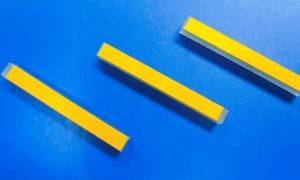-

BBO POCKELS CELL
BBO(Beta-Barium Borate, β-BaB2O4)based Pockels cells operate from approximately 0.2 - 1.65 µm and are not subject to tracking degradation. BBO exhibits low piezoelectric response, good thermal stability, and low absorption... -

LN POCKELS CELL
WISOPTIC uses the highest optical quality lithium niobate to make LN Pockels cells used in several laser types (including: Nd:YAG, Nd:YALO, Nd:YLF and Er:YLF). -

DKDP POCKELS CELL
Potassium dideuterium phosphate DKDP (KD * P) crystal has low optical loss, high extinction ratio, and excellent electro-optical performance. DKDP Pockels cells are made by using the longitudinal effect of DKDP crystals. The modulation effect is stable and the pulse width is small. It is mainly suitable for low-repetition-frequency, low-power pulsed solid-state lasers (such as cosmetic and medical lasers). -

RTP POCKELS CELL
RTP (Rubidium Titanyl Phosphate - RbTiOPO4) is a very desirable crystal material for E-O modulators and Q-switches. It has advantages of higher damage threshold (about 1.8 times that of KTP), high resistivity, high repetition rate, no hygroscopic or piezoelectric effect. As biaxial crystals, RTP’s natural birefringence needs to be compensated by use of two crystal rods specially oriented so that beam passes along the X-direction or Y-direction. Matched pairs (equal lengths polished together) are required for effective compensation. -

KTP POCKELS CELL
HGTR (high anti-grey track) KTP crystal developed by hydrothermal method overcomes the common phenomenon of electrochromism of the flux-grown KTP, thus has many advantages such as high electrical resistivity, low insertion loss, low half-wave voltage, high laser damage threshold, and wide transmission band.
